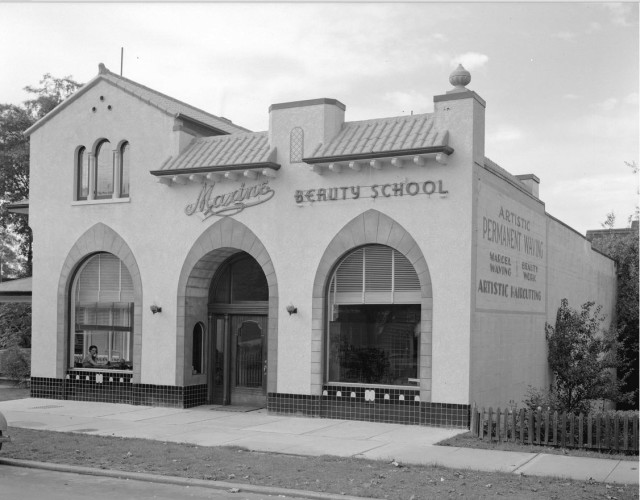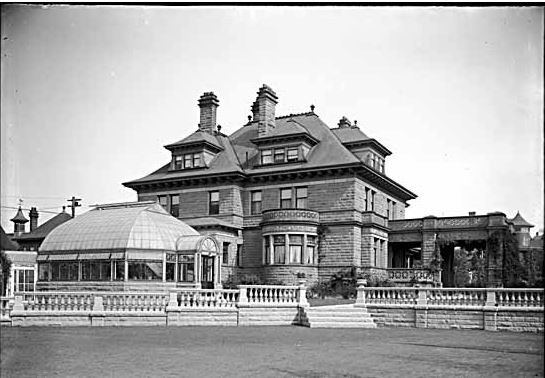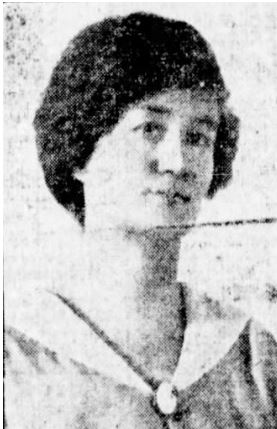John Atkin can be a bit of a kill joy, always squashing rumours about secret tunnels in Chinatown, ghosts in the Dominion Building, and well, blood in Blood Alley. John squashes another rumour in his story about a tunnel that supposedly connected a sugar baron to a brothel, but in doing so he uncovered some fascinating information about Maxine MacGilvray, a successful businesswoman who moved to Vancouver in 1914. This article originally ran on John’s blog What Floats to the Top of My Desk.
By John Atkin
I recently had the pleasure of leading a walk in the West End for the Vancouver Heritage Foundation as part of their Sunday coffee series at JJ Bean.
The cafe’s newest location on Bidwell sits behind the preserved facade of Maxine’s Beauty School. The question that’s most often asked is if there was a tunnel that connected the Rogers’ mansion Gabriola on Davie with a bootlegging operation and/or brothel based out of Maxine’s.

Apart from the general absurdity of the idea – the elevation change between Gabriola and Maxine’s would have made a tunnel an incredibly expensive engineering feat—Maxine’s was built in 1936—long after prohibition ended in BC and three years after it was repealed south of the border. There was no need for a bootlegging operation, let alone tunnels in the building, and the idea that a tunnel was used by sugar magnate B.T. Rogers to access a bordello from his home makes no sense because Rogers died in 1918.

The idea of the brothel probably stems from the sexy sounding name Maxine’s, but while sexy, it was still just a beauty school. Instead of a silly cliche, what we do have is a story of an enterprising woman who built a successful series of businesses here and in Vancouver and Seattle. I think she deserves some recognition.
So who was Maxine?

Maxine’s was named after Maxine E. MacGilvray from Wisconsin. Her name first appears here in connection with beauty products sold by Spencer’s department store in 1914. Trained in California, she gave talks on skin care at the store and would later open the first of her parlors in the store.
Maxine started with a hair salon in the 600 block of Dunsmuir, opened her second location in the 1920s on the ground floor of a house at 1211 Bidwell Street, and followed this with the opening of the Maxine College of Beauty Culture next door. Maxine manufactured her own beauty products in a small factory at 999 East Georgia Street called the Max Chemical Company.
She hired Ivor Ewan Bebb, a young Welshman who came to Canada in 1924 as her apprentice. Four years later Maxine, 36, and Ivor, 26, were married in Washington State. In 1931 the company moved to 1223 Bidwell to join her other enterprises and was renamed the Max-Ivor Company.
The couple hired architect Thomas B. McArravy to design a new building to replace the original school on Bidwell in 1935. The design is a cute Mission Revival building which was expanded in 1940 by architect Ross Lort. This is the preserved facade we see today.
The Vancouver beauty school closed in 1942 and the couple converted it into the Maxine Apartments. By the late 1940s, advertisements show it as an apartment hotel, and later as a full blown motel. In 1943, Maxine and Ivor opened the Max-Ivor Motel at 4th Avenue South in Seattle. The motel had 20 rooms, maid service and steam heat. Maxine died in 1952 and Ivor moved to Seattle to run an expanded Max-Ivor motel.
Sources: 1940 US Census, Skagit County marriage licences, immigration records, Vancouver World newspaper, BC Directories and Chuck Flood’s book, Washington’s Highway 99

